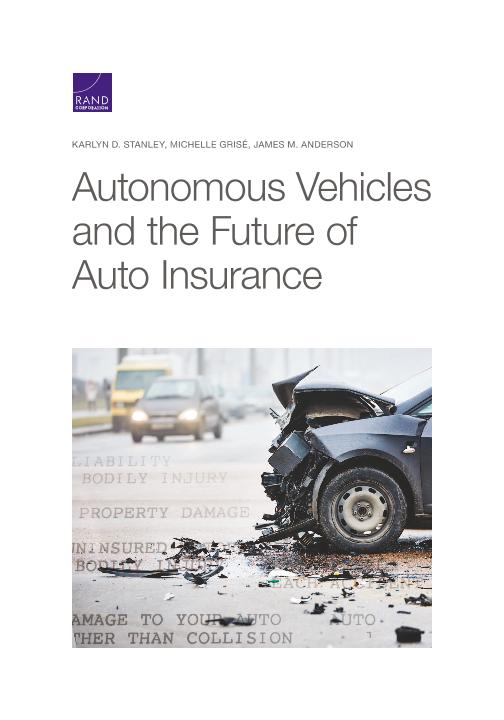Autonomous vehicles and the future of auto insurance

Contenido multimedia no disponible por derechos de autor o por acceso restringido. Contacte con la institución para más información.
| Tag | 1 | 2 | Value |
|---|---|---|---|
| LDR | 00000cam a22000004b 4500 | ||
| 001 | MAP20210034671 | ||
| 003 | MAP | ||
| 005 | 20220911185750.0 | ||
| 008 | 211203s2021 usa|||| ||| ||eng d | ||
| 020 | $a978-1-9774-0635-4 | ||
| 040 | $aMAP$bspa$dMAP | ||
| 084 | $a322 | ||
| 100 | 1 | $0MAPA20210036682$aStanley, Karlyn D. | |
| 245 | 1 | 0 | $aAutonomous vehicles and the future of auto insurance$cKarlyn D. Stanley, Michelle Grisé, James M. Anderson |
| 260 | $aSanta Monica, California$bRAND Corporation$c2021 | ||
| 300 | $a108 p. | ||
| 520 | $aTo investigate the impact that the widespread deployment of autonomous vehicles (AVs) could have on automobile insurance in the United States, RAND Corporation researchers interviewed 43 subject-matter experts from 35 stakeholder organizations and conducted an extensive literature review. A key finding from their research is that the existing automobile insurance system in the United States should be sufficiently flexible to accommodate the introduction of AVs. Experts generally agreed that, although some changes to the U.S. auto insurance model may be indicated as vehicles incorporate higher levels of automation, it is too early to make radical changes to the U.S. automobile insurance system. In addition, a majority of experts predicted that AVs would be deployed in a fleet ownership model, although their predictions regarding the specific formulation of fleet ownership differed. A majority of experts also said that the automobile insurance claims process for accidents involving AVs and conventional cars would not change significantly in the future, and experts agreed that consumer acceptance was very important to the successful deployment of AVs. In addition, the authors explored experts' assessments of the benefits and drawbacks of proposed future insurance models for AVs, such as statutory no-fault compensation schemes, current no-fault insurance models used in some U.S. states, fleet insurance, and manufacturer self-insurance. They also interviewed experts in the United Kingdom, Australia, Japan, and Canada about how those countries were adapting their insurance frameworks to incorporate AVs and ensure the compensation of those injured in accidents | ||
| 650 | 4 | $0MAPA20080603779$aSeguro de automóviles | |
| 650 | 4 | $0MAPA20150019967$aVehículos autónomos | |
| 650 | 4 | $0MAPA20080586294$aMercado de seguros | |
| 650 | 4 | $0MAPA20080586546$aNuevas tecnologías | |
| 650 | 4 | $0MAPA20080611200$aInteligencia artificial | |
| 650 | 4 | $0MAPA20080618384$aSeguridad en el automóvil | |
| 650 | 4 | $0MAPA20140009749$aConectividad | |
| 650 | 4 | $0MAPA20080611880$aPerspectivas del seguro | |
| 700 | 1 | $0MAPA20210036699$aGrisé, Michelle | |
| 700 | 1 | $0MAPA20210036705$aJames M. Anderson | |
| 710 | 2 | $0MAPA20080441258$aRAND Corporation |

